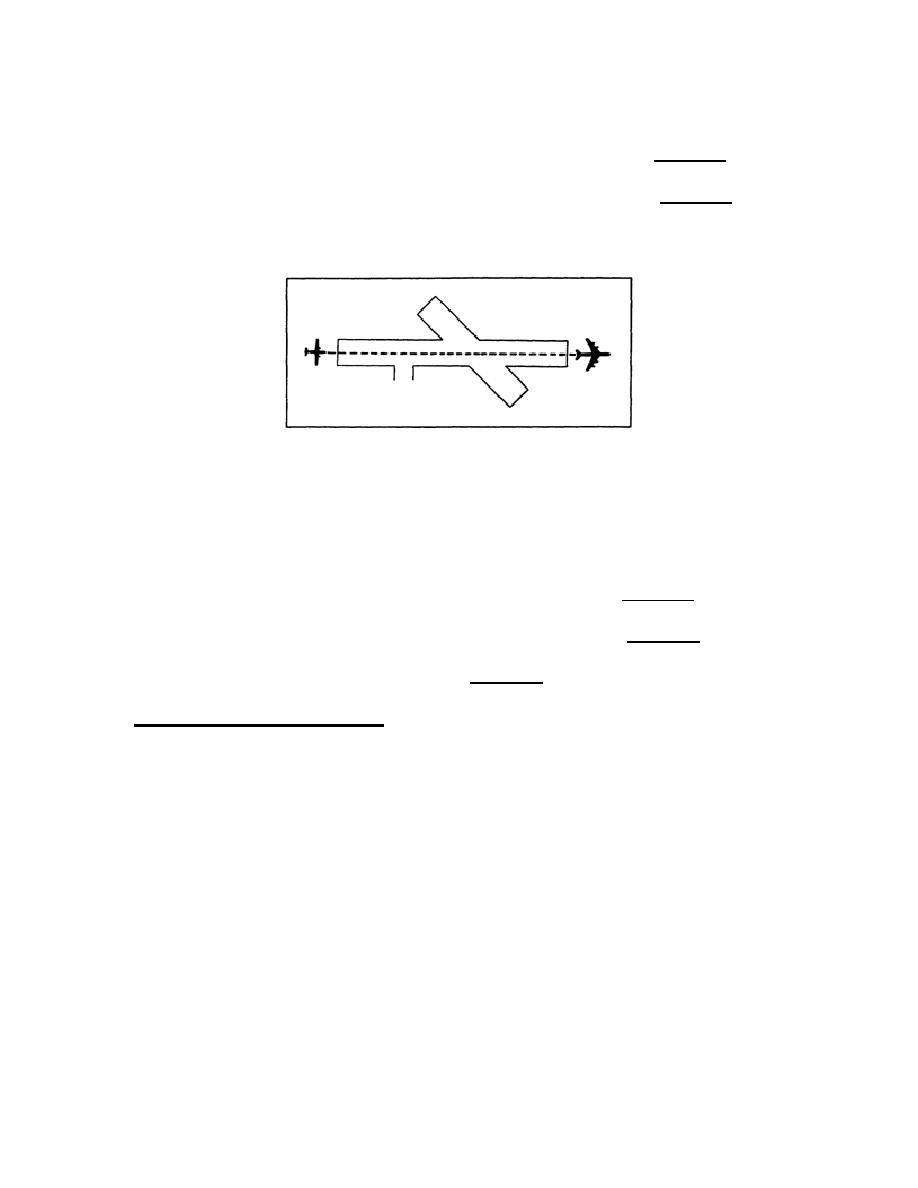
if the following minimum distances from the landing threshold exist:
(a) When a Category I aircraft is landing behind a Category I or II--3,000 feet.
(b) When a Category II aircraft is landing behind a Category I or II--4,500 feet.
(3) The other aircraft has left and crossed the runway end (Figure 2-8).
Figure 2-8. Arrival separation (other aircraft has crossed runway end)
(4) If you can determine distances by referring to suitable landmarks and the other aircraft is
airborne, that aircraft need not have crossed the runway end if the following minimum distance (Figure
2-9) from the landing threshold exists:
(a) Category I aircraft landing behind Category I or II aircraft--3,000 feet.
(b) Category II aircraft landing behind Category I or II aircraft--4,500 feet.
(c) When either is a Category III aircraft--6,000 feet.
c. Intersecting Runway Separation
(1) Separate an arriving aircraft (using one runway) from another aircraft (using an intersecting
runway or a nonintersecting runway) when the flight paths intersect. This is done by ensuring that the
arriving aircraft does not cross the landing threshold or flight path of the other aircraft until one of the
following conditions exists:
2-6
AV0944


 Previous Page
Previous Page
